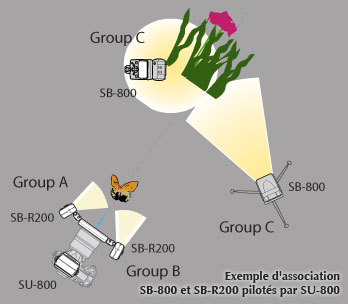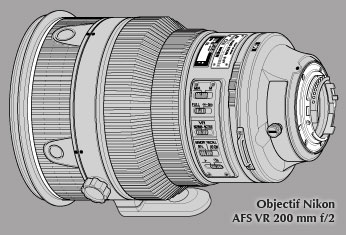 |
|
|
|||||||||||||||||||||||
|
|
|
|
|
|
|
|
|
||||||||||||||||||
|
|
|
||||||||||||||||||||||||
 |
 |
 |
 |
 |
 |
 |
|
||||||||||||||||||
|
|
 |
|
|
||||||||||||||||||||||
 |
|
||||||||||||||||||||||||
|
|
|
|
|
||||||||||||||||||||||
|
|
|
||||||||||||||||||||||||
|
|
|
|
|
||||||||||||||||||||||
|
|
|
||||||||||||||||||||||||
|
|
|
|
|
||||||||||||||||||||||
| Butterflies behave as acrobats of the sky but it is impossible to observe the details of their flight because the wings’ motion is too fast for human eyes. High-speed photography equipment is required to catch them in flight. I explain hereafter how speedlight flashes driven by the SU-800 commander let me freeze high speed motions.
|
|||||||||||||||||||||||||
Until the last year, for high speed shots, I never used the famous new features of Nikon speedlights such as iTTL or wireless slave flashes because the pre-flashes involved with them slow down the shutter lag. My flashes were connected to my Nikon D2x by cables. But my high-speed equipment was difficult to turn into operation in the nature. So, when I discovered the new close-up flash SB-R200 and the commander SU-800, I decided to achieve intensive tests of the new lighting kit R1C1. When flashes are used in M-mode, the additional shutter lag created by the SU-800 is limited and I found new tuning of my laser trigger to manage this lag (See NikonPro issue Spring 2006).
Then, during 2006, I discovered a new way to create high quality lighting without any cable between my camera and the flash units. The SU-800 commander can be used either with SB-R200, SB-600 and SB-800 units. It forms the single command centre of any of my multiple flash-lighting operation. Capable of triggering groups of remote Speedlights in the Creative Lighting System, it makes easy to drive each unit’s output power in manual mode through the comprehensive LCD panel located on the top of the camera. So, it makes possible to adjust instantly the exposure of small subjects even in M Mode required to manage the flashes duration and to freeze very high speed motions. The comments of each photograph come with a picture of the SU-800 commander displaying the lighting setting used to capture the high-speed shot.
|
|
||||||||||||||||||||||||
|
|
|
||||||||||||||||||||||||
|
|
|||||||||||||||||||||||||
|
Another advantage of the R1C1 kit in my practice of wildlife photography is the complete set of useful accessories supplied : the attachment ring SX-1 that enables SB-R200(s) to be attached to the lens front, the close-up Positioning Adapter that curves the SB-R200’s flash light toward the optical axis useful for special lighting effects, the diffuser SW-12 suitable either for SB-R200 and SB-800 units and the flexible arm clip SW-C1 used to fix diffuser or a remote SB-R200 unit to the attachment ring SX-1. The R1C1 kit also comes with an adapter ring set that lets me attach the SX-1 to many lenses from the Nikkor AF 20 mm f/2.8 D wide-angle to the long Micro-Nikkor AF 200 mm f/4 D. The last but least advantage of the R1C1 kit for me is the compatibility with the FP high speed synchro mode. And the FP mode can be associated with the manual setting in order to decrease the shutter lag. Now, I can mix the sun light with any combination of flash units and I can adjust the flashes power effortlessly in a minute from the unique control board of the SU-800 commander. This lighting system offers unprecedented versatility and control for every shot lighting challenges. Today, the technique is always present, undoubtedly more than in the past because I build more and more sophisticated lighting effects : back lighting, diffused light for soften shadows, sunset rendition and so on. But the technique does not disturb me any more, it helps me. When 6 or more flash units are involved in a single shot, all the settings are summarised on the LCD panel of the SU-800 commander. I can associate flash units in different groups and test them individually. I do not hesitate to mix the available light and the flash of SB-800 and SB-R200 using the synchro FP mode at 1/8000 sec. Incredible efficiency ! Now, I can concentrate on what is important: my small subjects and their environment. Shot after shot, I am amazed by the performances of butterflies’ wings. The butterflies make aerobatics and behave as acrobats of the sky !
|
|
||||||||||||||||||||||||
| next page |
|||||||||||||||||||||||||





